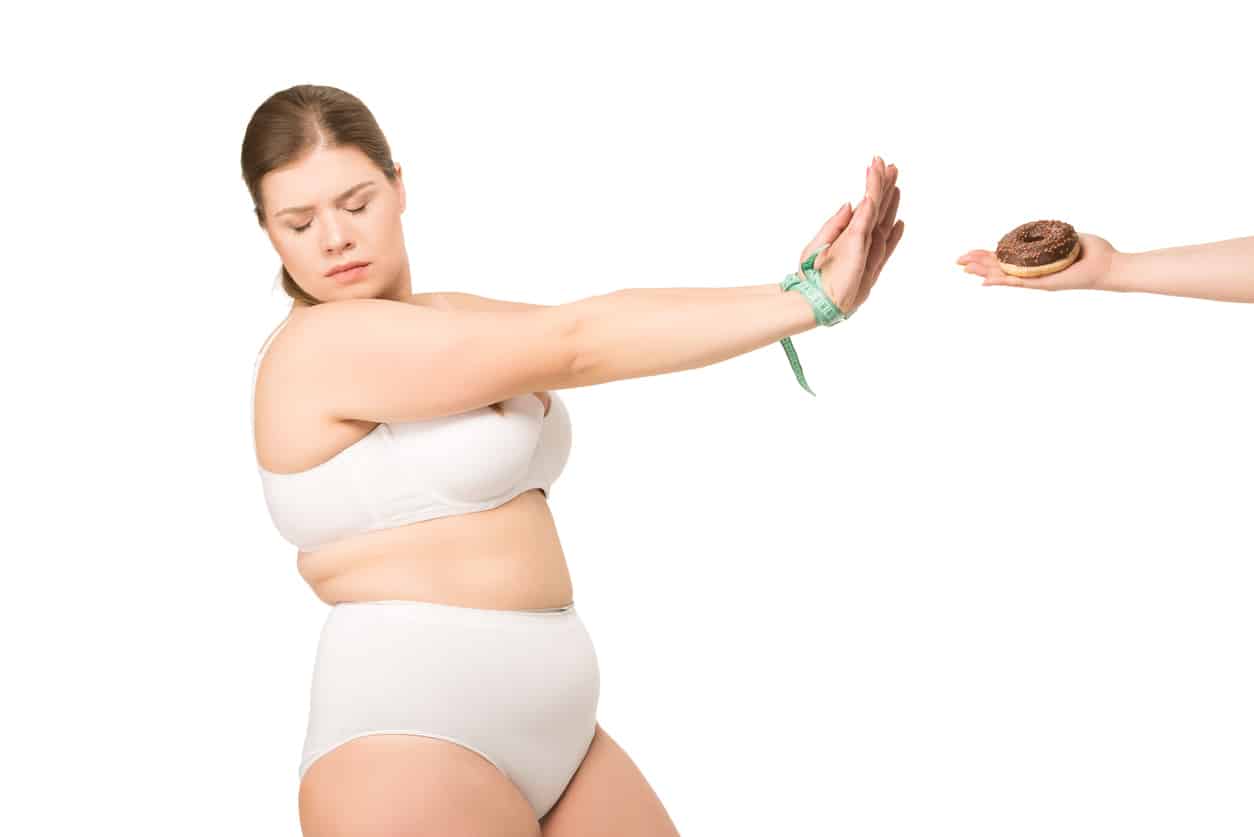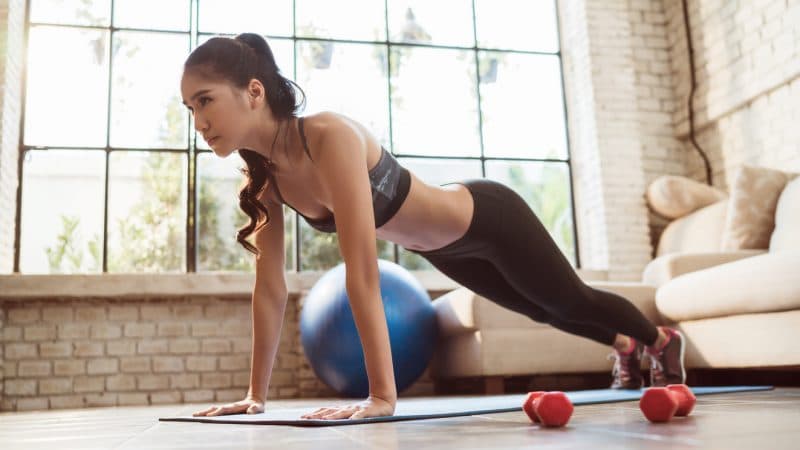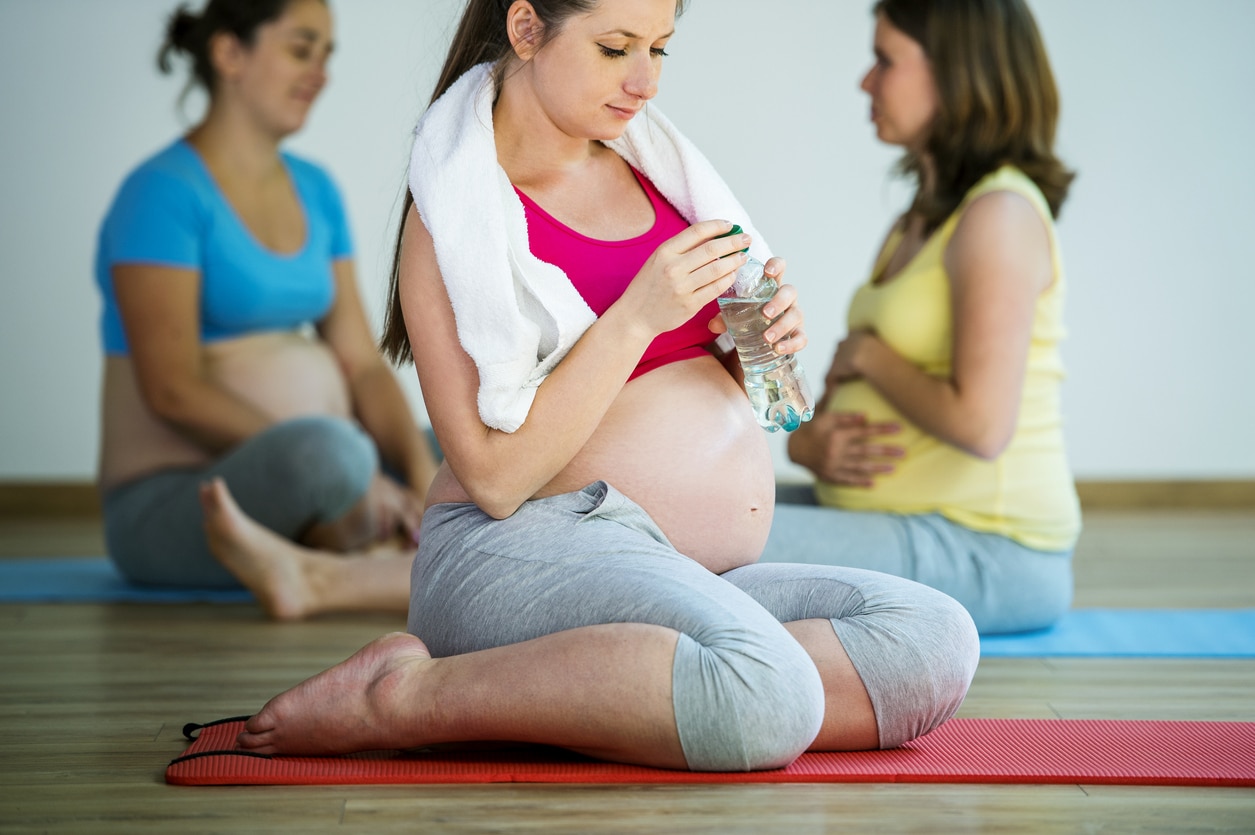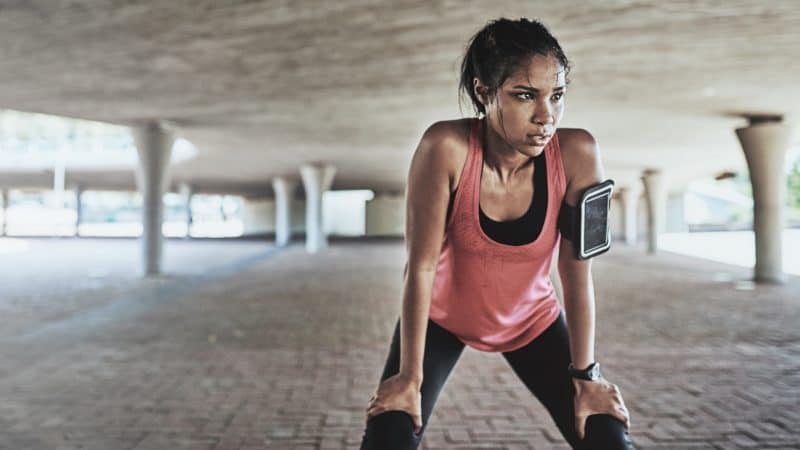No More Post-Baby Bump: 14 Tips to Help Busy Moms Lose Baby Weight
No More Post-Baby Bump:
14 Tips to Help Busy Moms Lose Baby Weight
As much as you love your new baby, you may not love the body that’s left behind. It can be manageable to lose baby weight with these great tips.
Did you know that it takes most women 3 years to get their confidence back after having a baby?
Although our bodies are incredible and can grow humans in 9 months, it takes time for your body to return to its pre-pregnancy shape.
If you want to learn how to shed fat and keep it off as a new mom, here are 14 tips to lose baby weight permanently.
1. If You Can Breastfeed, Do It!
One of the most effective postpartum weight loss tips is to breastfeed your child.
The reason why breastfeeding helps you lose weight is that your body uses fat reserves to help produce milk. Your body is also more efficient at burning the calories you eat every day.
Do keep in mind that breastfeeding mothers need to keep their energy up, which is why you should never diet after giving birth. The desire to shed your pregnancy weight may be high, but you and your baby’s health should always come first.
Some women naturally don’t produce enough milk for their children or they prefer to bottle feed. If you can’t breastfeed, don’t fret. There are still plenty of other things you can do to fuel your weight loss efforts.
2. Don’t Forget to Stay Hydrated
Losing weight after pregnancy can be as simple as remembering to drink enough water. This tip works well for anyone looking to shed fat.
There are plenty of reasons why drinking more helps you stay slim. Since our bodies are mostly made out of the water, we need to replenish our reserves every day. If you don’t drink enough, you’ll retain water and feel sluggish.
Drinking water also helps curb your appetite. If your someone who has a hard time knowing when you’re full, drinking plenty of water before and during mealtimes will help prevent you from overeating.
Did you know that our bodies’ thirst and hunger signals are the same? This means your stomach growls could be your body asking for water. A good method to live by is to drink a glass of water whenever you think you feel hungry. If you still feel hungry 20 minutes later, then you know you’re experiencing true hunger and not thirst.
Drinking also helps us eliminate waste easier. The less backed-up your system is, the slimmer you’ll feel.
3. Lose Baby Weight by Exercising Smarter, Not Longer
Lots of people have been brainwashed into believing that logging more hours at the gym leads to more success. While some people may thrive in a gym setting, most of us would rather stay in bed.
The best way to stick to an exercise routine is to find a setting, workout, and timeframe that suits you best.
One tip that all moms should know is that you can exercise for 10 minutes and get the same results as someone else who exercises for an hour. The key to losing weight and toning muscle isn’t how long you sweat, but how effective your sessions are.
If you can pour all of your energy into an intense 10-minute workout, you’ll make progress. This method is much more effective for your goals and happiness than sluggishly pedaling on a stationary bike for an hour while feeling miserable.
4. Take Your Baby for a Walk Every Day
Walking is incredible for weight loss and overall physical and mental health. The best part is that you can also bond with your baby. Even if you don’t break a sweat while you walk, you’re still burning calories and toning your muscles.
This is a great opportunity to get out of the house so you don’t feel stir-crazy at home with your baby. If you know any other moms, invite them to go walking with you. You can have a fitness buddy who can hold you accountable to your goals and help you pass the time with fun conversation.
5. Make Sleep a Priority
Sleeping your fat away sounds too good to be true, but it’s one of the best ways to maintain a healthy weight.
The reason why sleep deprivation leads to weight gain is that our bodies turn to eat more calories to make up for the lost energy. When we’re tired, we tend to reach for comfort foods full of fats and sugars to feel better.
Sleep also helps fuel workouts. If you’re too tired, exercising will feel like an impossible challenge.
Do you have willpower made out of steel? Even if you can resist junk food and stick to your workout routine, your body is still plotting against your weight loss efforts.
One night of sleep deprivation is enough to trigger the release of ghrelin, a hormone that revs our appetite. Excess calories that come from healthy sources still turn into a fat gain.
6. Meal Prep Once a Week to Make Cooking Easier
Cooking at home is the best way to save money and skip unnecessary calories, sugars, and fats. When you’re the chef, you control how much you eat and the quality of your ingredients.
However, all new moms know how challenging it is to find any time that isn’t devoted to caring for their babies. This is why batch cooking is the perfect method for your weight loss.
If you can get help from your partner or another loved one, dedicating a few hours once a week to batch cooking is easy.
During this time, you can make a big pot of brown rice, quinoa, or other healthy whole grains. You can also bake a pack of chicken breasts or another source of lean protein. Wash and chop all your veggies so they’re ready to eat raw or cook in a flash.
Once your prep work is done, all you have to do is reheat your food and season it to create a new dish for meals during the week. Check out these batch cooking recipes that take no time to make.
7. Join a Weight Loss Program That Does the Planning
Most new moms are exhausted, battle mental fog, and have no time for themselves. Losing weight fast requires lots of planning.
If you want to make life easier, join a weight loss program that has a tried-and-true method for fat loss.
All of your meals and calories will be customized for your unique body type and fitness goals so you don’t have to think. You can also have access to personal coaches and a community of other people in the program who are there to motivate each other and share tips.
These programs are more effective than solo-dieting because all the details are hammered out to a science. There’s no guesswork at mealtimes and the ease of cooking makes it easier to stick to the plan.
8. Eat More Plant-Based Meals
If it comes out of the earth, it’s good to eat! Plants are the best health foods because they are low in calories but high in nutrients your body needs.
Meat is linked to excess body fat and illnesses. The reason why meat and other animal products can sabotage your weight loss efforts is saturated fats and cholesterol.
The more plant-based you can eat, the better. If you’re up to the challenge, you can even try going vegan for a month. Veganism is one of the most popular weight loss lifestyles because you can eat a lot of wholesome foods with fewer calories.
9. Don’t Skip Breakfast or Starve Yourself
Thanks to fad dieting, most people’s first instinct to lose weight is to skip meals or starve themselves. While you can get fast results, you’ll feel miserable. As soon as you start eating again, you’ll put all the weight back on and then some.
In fact, yo-yo dieting is much more dangerous for your health than maintaining a steady BMI. Instead of passing on breakfast, start your day right with a smoothie filled with fresh greens or a hearty bowl of oatmeal with enough fiber and protein to keep you full until lunch.
10. Reward Yourself in Moderation
Did you know that some studies have revealed that cheat meals or cheat days can yield more fat loss than strict dieters?
The reason why treating yourself works is that it gives you something to look forward to after a week of eating healthy. This incentive will help you stay on track.
People who remove all of their favorite foods from their diets are also more likely to binge. Once people binge, they may decide to quit altogether because they think all their efforts have been lost.
Letting the lion out of the cage for a short time each week will help you feel satisfied. Besides, eating more calories one day revs your metabolism so you can continue burning more the next day.
11. Eat Healthy, High Volume Snacks
Have you ever tried eating snacks designed for dieters and felt ravenous 30 minutes later? Although these treats are healthier than other junk food, they’re not substantial.
The best way to fill up is to eat nutrient-dense foods that pack a lot of volume for not a lot of calories.
Fruits and vegetables are the best sources of fuel. Check out these no-cook snack recipes that include treats like banana ice cream and sweet potato hummus. If you want a heartier snack, you can dip apple slices in a nut butter of your choice to get a dose of healthy fats.
12. Manage Your Stress and Care for Your Mental Health
Yoga is one of the best exercises that everyone should try. It combines cardio, muscle toning, stretching, and meditation. You can even reap the health benefits by doing it only 5 minutes a day.
Raising a child is one of the most stressful things people can do. Stress turns our bodies into effective fat storing machines. Finding ways to cope with any negative emotions is crucial for your health.
Although yoga is a great place to start, some people can’t stand it. Just because one exercise works for one person, it doesn’t mean you’ll enjoy it. Take some time to experiment with different outlets to find your happy place.
Exercise always makes you feel better because of endorphins, but you can manage your stress in other ways, too. Painting, knitting, scrapbooking, and writing are just a few of the hundreds of different activities you could try.
13. Strength Training
Many women are afraid of lifting weights because they don’t want to get bulky muscles like men. However, it’s impossible for females to pile on muscle with casual weightlifting.
Strength training is ideal for new moms because it involves lifting light weights for extended repetitions. This will help tone your muscles and burn fat for a sexy, sculpted look.
You don’t need a gym membership to strength train, either. Try these at-home workouts that utilize your body weight to help you shape up.
14. Be Patient and Kind to Yourself
The most valuable lesson all women need to learn is self-love. Your body can do unbelievable things and you should be proud of it.
Making a baby takes 9 months. During this time, your organs shift, your abdominals split apart, and your pelvis opens to make room for another human being.
Every mom cherishes those 9 months of beautiful change. After you give birth, you should have the same patience and acceptance of your body as you did while you were pregnant.
Remember how long it took your body to come to its current size and give yourself the same amount of time to shrink down. Celebrities who boast about their bodies a couple months after giving birth have a team of personal trainers, chefs, and designers to make them look their best.
The happier you are with yourself, the more likely you are to stick with your goals. Always strive to be the best version of yourself, but never stop loving yourself along the journey.
Ready to Transform Your Body?
The best way to lose baby weight and keep it off is by committing to easy lifestyle changes. When it comes to shedding fat, even the smallest habits can add up.
If you want guaranteed results within a couple of months, then Body Transformation Coach would love to help you get the body of your dreams the healthy way. Contact us for more information on why our program works and how we can help revolutionize your health.





































Recent Comments